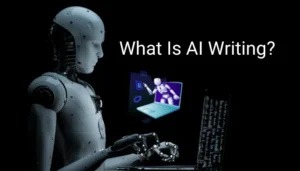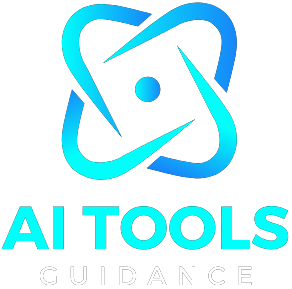Introduction
Ever dreamed of turning a quick sketch or a simple idea into a stunning 3D model without spending hours learning complex software? With Rodin AI, that dream is now reality! At AI Tools Guidance, we’re thrilled to share how Rodin AI empowers everyone—from game developers to AI 3D printer enthusiasts—to create professional-grade 3D assets in minutes. Visit hyper3d.ai (Formly Rodin AI)
Whether you’re a beginner dipping your toes into 3D modeling or a seasoned designer streamlining your workflow, Rodin AI offers a game-changing solution. In this blog, we’ll explore what makes Rodin AI so powerful, walk you through its features, and show you how to start creating 2D to 3D model free good quality assets today. Ready to bring your ideas to life? Let’s get started!

What Is Rodin AI?
Rodin AI is a revolutionary platform that transforms text prompts or 2D images into high-quality 3D models with minimal effort. Developed by Deemos Tech, HyperHuman Rodin—specifically Rodin Gen 1.5—is a cutting-edge tool powered by over 4 billion parameters. This massive AI model generates clean meshes, physically based rendering (PBR) textures, and production-ready Rodin AI models for industries like gaming, virtual reality (VR), film, and AI 3D printer applications. Unlike traditional tools such as Blender or Maya, Rodin 3D AI automates time-consuming tasks like UV unwrapping and retopologizing, making it a go-to choice for creators who value speed and simplicity.
For example, instead of spending days manually sculpting a character, Rodin AI 3D lets you input a description like “futuristic robot with glowing circuits” and get a detailed model in minutes. This accessibility sets Rodin AI apart, opening up 3D creation to hobbyists and professionals alike. But what truly makes Rodin AI shine? Let’s break it down.
Why Rodin AI Stands Out
Rodin AI isn’t just another 3D modeling tool—it’s a leap forward in creativity and efficiency. Here’s why it’s a favorite among creators:
- Speed: With Rodin AI, you can create 2D to 3D model free good quality assets in minutes, not hours. This is a huge time-saver for projects with tight deadlines.
- Accessibility: Its intuitive interface welcomes beginners while offering advanced features for pros. No need for years of 3D modeling experience!
- Versatility: Rodin AI 3D supports both text-to-3D and image-to-3D generation, with export options like OBJ, FBX, and STL for seamless integration into tools like Unity, Unreal Engine, or AI 3D printer workflows.
These strengths make Rodin AI a versatile tool for anyone looking to create high-quality 3D assets without the usual barriers. Next, let’s explore the features that power this innovation.
Key Features of Rodin AI
Rodin AI is packed with tools that make 3D modeling faster, easier, and more creative. Here’s a closer look at what sets Rodin AI models apart, with insights into how each feature benefits users.
1. AI-Powered 3D Generation
At the heart of Rodin 3D AI is its advanced generative technology, driven by algorithms like 3D ControlNet and LoRA modules. These allow HyperHuman Rodin to interpret text prompts or images and produce detailed Rodin AI models with clean topology. For instance, you can type “medieval castle with stone walls” or upload a sketch, and Rodin Gen 1.5 will generate a fully realized 3D model. This eliminates the need for manual sculpting, which can be intimidating for beginners and time-consuming for experts.
The result? Rodin AI 3D delivers production-ready assets that rival those created with traditional software, but in a fraction of the time. This feature is especially valuable for rapid prototyping in gaming or product design.
2. PBR Texture Generation
Textures bring 3D models to life, and HyperHuman Rodin excels here. It generates physically based rendering (PBR) textures that ensure realistic lighting and materials, making Rodin AI models compatible with game engines like Unity and Unreal Engine. You can adjust texture intensity to match your project’s aesthetic—whether you want a sleek, futuristic look or a weathered, rustic vibe.
For example, a Rodin Gen 1.5 model of a sci-fi spaceship will include detailed metallic surfaces and glowing panels, ready for rendering in a game or VR environment. This feature saves you from manually painting textures, streamlining your workflow.
3. Multi-View and Fusion Modes
Creativity thrives with flexibility, and Rodin AI delivers through its multi-view and fusion modes. These allow you to generate models from multiple angles or combine shapes for complex designs. For instance, Rodin Gen-1 and Rodin Gen 1.5 let you fuse elements—like adding intricate wings to a dragon model—perfect for prototyping unique assets.
This feature is a boon for VR/AR designers who need models that look great from every angle. By combining views, Rodin 3D AI ensures your creations are consistent and visually appealing, no matter the perspective.
4. Free Tier and Credit System
One of Rodin AI’s most appealing aspects is its affordability. New users receive 40 free credits (10 permanent + 30 trial) to test Rodin AI 3D without spending a dime. Subscriptions start at $24/month, with bulk pricing as low as $0.92 per model, making it cost-effective for high-volume creators. Plus, you can regenerate models up to 50 times for free to perfect your design before finalizing.
This flexible pricing makes Rodin AI accessible to hobbyists experimenting with 2D to 3D model free good quality projects and professionals scaling up production. For AI 3D printer users, the free tier is perfect for testing designs before printing.
5. In-Browser Sculpting and Multi-Format Export
Rodin AI offers in-browser sculpting, so you can refine your models without downloading additional software. Adjust geometry, tweak textures, or fine-tune details directly on the Hyper3D platform. Once satisfied, export your Rodin AI models in formats like OBJ, FBX, or STL, which are compatible with Blender, Maya, game engines, and AI 3D printer workflows.
This seamless process ensures your models are ready for any project, whether you’re building a game level, animating a short film, or printing a physical prototype. The ability to edit and export in one place is a major time-saver.
| Feature | Description | Best For |
|---|---|---|
| AI-Powered 3D Generation | Generates detailed models from text or images using 3D ControlNet and LoRA modules. | Rapid prototyping, beginners, professionals |
| PBR Texture Generation | Creates realistic textures for game engines and rendering. | Game developers, animators |
| Multi-View & Fusion Modes | Combines angles and shapes for complex, consistent designs. | VR/AR designers, prototypers |
| Free Tier & Credits | 40 free credits; subscriptions from $24/month ($0.92/model). | Hobbyists, budget-conscious creators |
| In-Browser Sculpting | Edit models directly in the browser; export as OBJ, FBX, STL. | AI 3D printer users, game developers |
This table summarizes Rodin AI’s core features, making it easy for readers to grasp their value and applications. Now, let’s see how you can put these features to work.
How to Create 3D Models with Rodin AI
Getting started with Rodin AI is straightforward, even if you’ve never touched 3D modeling before. Here’s a step-by-step process to create your own Rodin AI models, whether for gaming, VR, or AI 3D printer projects.
- Sign Up: Visit hyper3d.ai and create a free account to unlock 40 free credits (10 permanent + 30 trial). This lets you experiment with Rodin AI 3D without any upfront cost.
- Input Your Idea: Enter a text prompt, such as “steampunk robot with gears,” or upload a 2D image, like a sketch or photo, as a reference. Rodin 3D AI supports both text-to-3D and image-to-3D generation for maximum flexibility.
- Generate and Refine: Review the AI-generated model in the Hyper3D platform. Use in-browser tools to adjust geometry, textures, or details. You can regenerate up to 50 times for free to get the perfect result.
- Export: Download your model in a format like OBJ, FBX, or STL, depending on your needs. For example, use STL for AI 3D printer projects or FBX for game engines like Unity.
Pro Tip: For the best results, use high-resolution images and specific prompts. For instance, “vintage leather armchair with brass studs” will yield a more detailed model than “chair.” Experiment with styles to tap into Rodin Gen 1.5’s full creative potential.
This process is designed to be intuitive, so you can focus on creativity rather than technical hurdles. But who exactly can benefit from Rodin AI? Let’s find out.
Who Can Benefit from Rodin AI?
Rodin AI is a versatile tool that serves a wide range of creators. Here’s how different users can leverage Rodin AI 3D to bring their projects to life:
- Game Developers: Create assets for Unity or Unreal Engine in minutes. Rodin Gen-1 and Rodin Gen 1.5 produce clean meshes and PBR textures, reducing the need for manual cleanup.
- VR/AR Designers: Build immersive environments and avatars with multi-view consistency, ideal for VR headsets like Apple Vision Pro. Rodin AI models shine in dynamic, 360-degree settings.
- Product Designers: Prototype physical products for AI 3D printer applications. Export STL files for high-quality prints, from jewelry to industrial parts.
- Animators: Generate models for films or animations, complete with realistic textures. HyperHuman Rodin saves time on character and prop creation.
- Hobbyists: Explore 3D modeling without advanced skills. The free tier and user-friendly interface make Rodin AI perfect for beginners crafting 2D to 3D model free good quality projects.
Real-World Example
Consider Sarah, an indie game developer working on a sci-fi RPG. Using Rodin Gen 1.5, she created a detailed alien character model in just 15 minutes by uploading a concept sketch and tweaking the textures in-browser. Compared to traditional tools, which would have taken days, Rodin AI saved her time and let her focus on gameplay design. This efficiency is why creators across industries are turning to Rodin 3D AI.
However, how does Rodin AI stack up against other tools? Let’s compare.
Rodin AI vs. Other 3D Modeling Tools
To understand Rodin AI’s value, it’s helpful to compare it with competitors like Tripo AI and traditional software like Blender or Maya. Here’s a detailed breakdown:
| Aspect | Rodin AI | Tripo AI | Blender/Maya |
|---|---|---|---|
| Speed | Generates Rodin AI models in minutes. | Fast, but less focus on clean topology. | Hours or days for manual modeling. |
| Ease of Use | No skills needed; text/image inputs. | User-friendly but less intuitive. | Steep learning curve for beginners. |
| Cost | Free tier (40 credits); $0.92/model subscriptions. | Free and paid tiers; pricing varies. | Free (Blender) or expensive licenses (Maya). |
| Quality | Clean, retopologized meshes with PBR textures. | Good quality but may need post-processing. | High quality but requires expertise. |
| Use Cases | Gaming, VR, AI 3D printer, film. | Prototyping, gaming. | Professional production, all industries. |
- Speed: Rodin AI excels at rapid generation, turning text or images into 2D to 3D model free good quality assets in minutes. Tripo AI is fast but may require cleanup, while Blender and Maya demand manual effort.
- Ease of Use: Rodin 3D AI requires no prior experience, unlike Blender or Maya, which have steep learning curves. Tripo AI is user-friendly but less polished than HyperHuman Rodin.
- Cost: The free tier and affordable subscriptions ($24/month, $0.92/model) make Rodin AI budget-friendly. Blender is free, but Maya’s licenses can cost thousands annually.
- Quality: Rodin Gen 1.5 produces clean, production-ready meshes rivaling professional tools, while Tripo AI may need additional work for similar results.
For example, a product designer using Rodin AI can create a prototype for an AI 3D printer in minutes, while Blender would require hours of modeling and texturing. This efficiency makes Rodin AI a standout choice for modern workflows.
Tips for Maximizing Rodin AI
To get the most out of Rodin AI, consider these practical strategies:
- Be Specific with Prompts: Detailed descriptions yield better results. For instance, “cyberpunk cityscape with neon signs” outperforms a vague “city.” This applies to both Rodin Gen-1 and Rodin Gen 1.5.
- Use High-Quality Inputs: Upload clear, high-resolution images for image-to-3D generation. A blurry sketch may lead to less accurate Rodin AI models.
- Experiment Freely: With up to 50 free redos, try different prompts or styles to refine your design. This is especially useful for AI 3D printer projects requiring precision.
- Integrate with Other Tools: Pair Rodin AI 3D with Blender for advanced editing or Claude for enhanced AI-driven workflows. This combination maximizes creative control.
These answers address user pain points, enhancing the blog’s value and SEO performance by matching informational intent.
The Future of Rodin AI
As Rodin AI continues to evolve, its potential grows. Posts on X highlight excitement for Rodin Gen 1.5’s clean topology and high-quality textures, with some users anticipating Rodin Gen-2 integrating with tools like Grok for robotics and 3D printing applications. Deemos Tech’s focus on democratizing 3D creation suggests future updates may include even more advanced features, such as enhanced avatar generation or real-time collaboration tools.
For now, Rodin AI is already transforming how creators work, making it easier to produce 2D to 3D model free good quality assets for diverse applications. Whether you’re crafting a game, designing a product, or experimenting with AI 3D printer projects, Rodin AI is a tool to watch.
Frequently Asked Questions
1. What is Rodin AI?
Rodin AI is a powerful tool that converts 2D images into high-quality 3D models using artificial intelligence. Known for its creative precision, Rodin AI is often used by designers, game developers, and digital artists. It’s especially popular for producing detailed and realistic 3D content with minimal effort.
2. Is Rodin AI free or paid?
Rodin AI offers both free and paid plans. The free version provides limited usage and access to basic Rodin AI models, while the paid version unlocks premium features, faster processing, and higher-resolution output. Users looking for commercial-grade results usually opt for the paid plans.
3. What is Rodin Gen 1.5?
Rodin Gen 1.5 is an upgraded version of the initial Rodin AI model. It provides improved 2D to 3D model conversion, better texture rendering, and more accurate object shaping. This version enhances the capabilities of Rodin AI 3D for higher-quality outcomes.
4. What is Hyperhuman Rodin?
Hyperhuman Rodin refers to a specific model or feature under the Rodin framework that focuses on lifelike 3D human creation. It’s ideal for creating characters for gaming, virtual reality, or animation. The hyperhuman version emphasizes realistic skin textures and motion-ready structures.
5. Is DALL·E AI free to use?
DALL·E offers a limited number of free credits for image generation. After exhausting those, users need to purchase more. While it’s not directly connected to Rodin AI, both tools are part of the growing AI creativity ecosystem.
6. Is Haiper AI free?
Haiper AI has both free and paid tiers. The free version includes standard features, while the paid plan gives access to HD outputs and batch rendering options. It can complement Rodin AI 3D workflows when generating video-based AI visuals.
7. How much is Haiper AI?
Haiper AI’s pricing varies, generally starting with monthly plans around $10–$15 for individual creators. Premium tiers offer more features, which can be useful when combining results with Rodin AI models or AI 3D printing tasks.
8. Is Haiper AI shutting down?
As of now, Haiper AI is active. Rumors about its shutdown are unfounded. It continues to update and release new features, working well alongside Rodin AI in creative pipelines.
9. Is there a completely free AI?
Yes, several AI tools offer free versions with limited usage. However, tools like Rodin AI, while offering free trials, often require payment for full access. True “completely free” tools may lack the quality found in Rodin 3D AI.
10. What is the new AI app replacing ChatGPT?
Several apps are emerging, but none have officially replaced ChatGPT. Still, new entrants often integrate with creative tools like Rodin AI, making them valuable for visual tasks beyond text.
Try Rodin AI Today
Ready to turn your ideas into 3D reality? Rodin AI makes it fast, easy, and affordable to create stunning Rodin AI models for gaming, VR, animation, or AI 3D printer projects. Sign up for free at hyper3d.ai to claim your 40 free credits and start exploring Rodin 3D AI today. Join the AI Tools Guidance community to share your creations on social media and connect with other creators!
Have you tried Rodin AI yet? Drop your thoughts in the comments or check out our other AI tool reviews to boost your creative workflow. Let’s shape the future of 3D modeling together!










